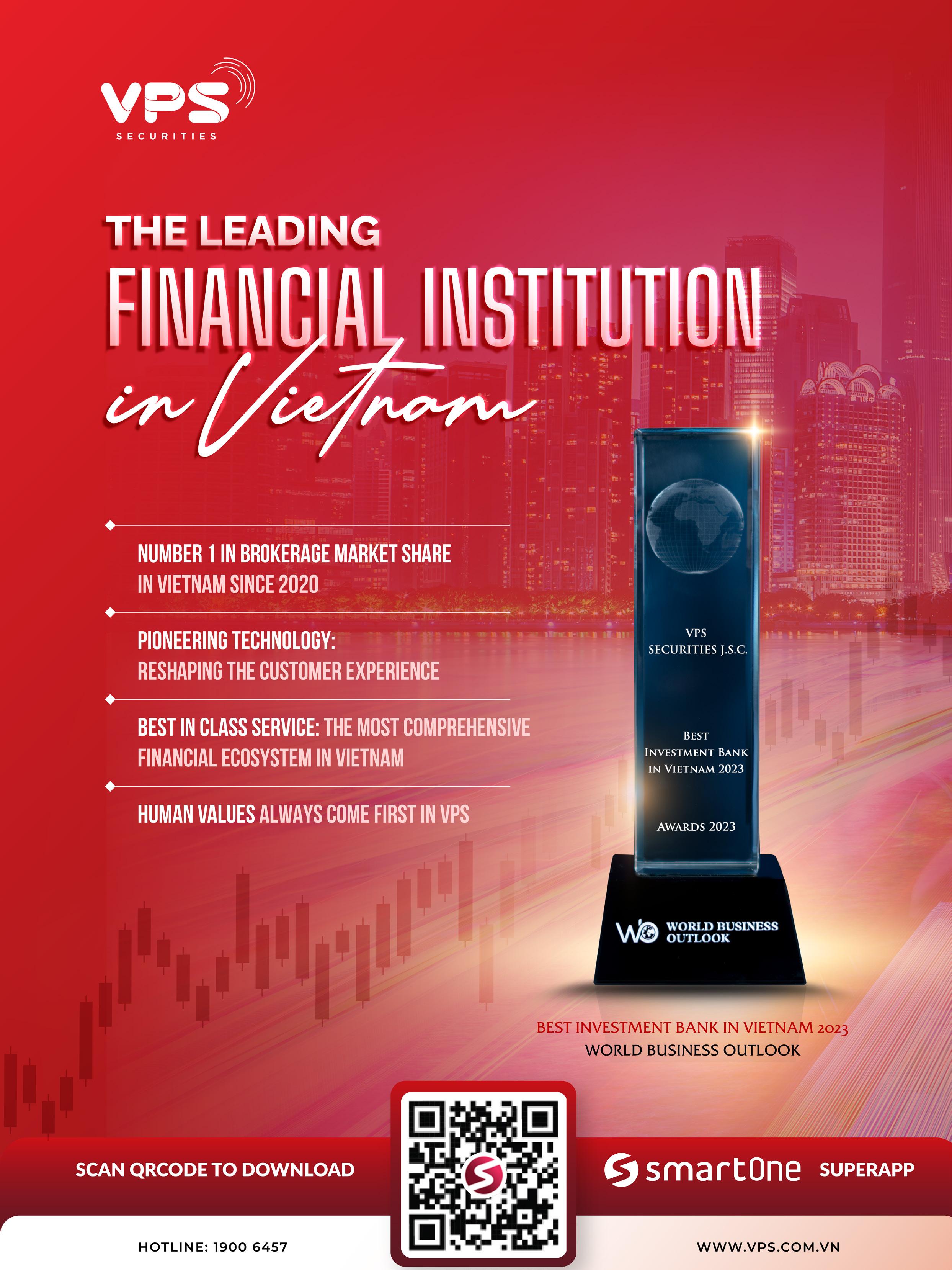








Managing Director
Shankar Shivaprasad
Co-founder & CEO
Shashank M
Chief Editor
Ujal Nair
Assistant Editor
Kevin Thomas
Laura Edwards
Head of Operation
James
Head of Production
Tom Hanks
Head of Research
Catherine D’Souza
Head of Media Sales
John Smith
Advertising Contact Info@wboutlook.com
Content Managers
Sathya Narayana B
Amith Raj S
Business Developers
Daisy Cooper, Mark Cooper, Justin Wong, Elena Davis, Eric Thomson
Graphic Designer
Chandan R
Video Editor
C Gidieon Sam Issac
Accounts Manager
Steve Smith
Office Address
32 Pekin St #05-01
Singapore 048762
Phone: +65 86159608

The Asia Pacific region, with a strong GDP growth rate of around 3.9 percent, registered the highest growth rate in the world in 2024. Inflation rates are expected to decrease throughout the region this year. The APAC region seems to have rejuvenated investors’ confidence, with a slight relief in financing costs.
With Japan, China and Australia presenting new opportunities, new markets are being developed across India, Bangladesh, Sri Lanka, Indonesia, Vietnam and a few others. The diverse investment landscape is proving to benefit the largest population diaspora in the world. The real estate and the hospitality sector has seen renewed excitement with fresh investments in the tourism and infrastructure sector across the APAC region. The hotel investment market is showing remarkable resilience and growth in 2024 and can be expected to continue in 2025 as well. Japan, India and Thailand are the leaders in this sector for 2024. The buzzword, AI, has been a major factor for most technology sector investments. With many of the major corporate houses focussing on productivity, efficiency and cost savings, Artificial Technology became a major agenda in the IT and finance sector. Many of the well-established companies have led the investments for Digital Transformation in the APAC region. Many of the innovations have taken place in the health and wellness sector and the rising penetration of e-commerce has only led to the growth of this sector across the globe. South Korea and China have become major players of self-care products that are widely accessible over online stores.
World Business Outlook has tried to introspect into these changing consumer behaviours across the globe and analysed the new investment opportunities presented by the APAC region to the globe. As we close 2024 on a positive note, we hope to open 2025 with a more positive impact towards the environment. We urge governments and businesses across the world to focus more on clean and renewable energy sources. For 2025, World Business Outlook will be having new jury members who will lay more stress on sustainable business practices. We are glad to see that there are many companies across sectors that have already incorporated major steps to reduce their carbon footprints, such as green construction, waste management and more.
We look forward to more award winners earning their titles for their environment-friendly perspectives in 2025. We wish you all a Happy, Healthy, Wealthy and very Lucky year in 2025. File your nominations for World Business Outlook Awards 2025, today.
Be sure to check out our website at www.worldbusinessoutlook.com


Connect with us on Facebook: www.facebook.com/WBOutook
Twitter : https://twitter.com/wboutlook
Instagram: https://instagram.com/wboutlook
LinkedIn: https://www.linkedin.com/company/world-business-outlook YouTube: https://www.youtube.com/@worldbusinessoutlook908







Global Economic Experts ascertain that economic growth and power generation are interlinked. As time progresses, the demand for electrical power usage increases due to a population hike and the needs of the industrial sector. The Philippines, popularly known as the Pearl of the Orient Seas, is focused on bringing a revolution in the power generation sector to meet the rising needs of its growing population.
The Philippines Government is well aware of the fact that a major share of power generation comes from natural resources, notably coal. Along with natural gas, natural fuels contribute to more than two-thirds of the power supply. Yes, renewable energy sources such as hydrothermal power and geothermal power plants contributed to less than 20 percent of the power demand. The Philippines has invested in wind power and solar panels, but since they are in the initial stages, they contribute less than 5 percent of the demand.

Considering the high power demands, the Government of the Philippines has designed the Philippine Energy Plan 2016 to 2030, having included important points from the 8-point Energy Sector Agenda (Philippine Development Plan 2023 to 2028) and President Rodrigo Roa Duterte’s 10-point Socioeconomic Agenda.
The Department of Energy in the Philippines has also designed the Philippine Energy Plan (PEP – 2023 to 2050), (Mindanao Energy Plan – 2018 to 2040), Marinduque Energy Plan and Romblon Energy Plan to gain energy independence.
Companies
As per the Department of Energy Philippines, the demand for electrical energy is slated to grow every year by more than 4 percent. As per a statistical survey, the country needs to generate more than


49,000 MW in 2040. To ensure that the demand is met, the Government has given permission to make use of competitive, efficient, sustainable and clean programs.
The private corporations have understood the environmental policy of the Government and are making every effort to generate the rising power demand. A popular company, in this regard, is San Miguel Global Power, known as one of the biggest power generation providers in the Philippines. The parent company of San Miguel Global Power is San Miguel Corporation, one of the most reputed global business conglomerates.
The Management at San Miguel Global Power has integrated strict sustainability quality checks in tandem with the Philippines Governmental program and as per the United Nations Sustainability Development Goals. In the same tune, the company makes use of perfect energy management systems that reduce energy consumption while producing electricity.
The company’s main aim is to distribute consistent and reliable electrical energy to boost the economy of the Philippines. The company has six power plants working at full steam to contribute to the entire country’s demand. A look at the diverse power portfolio generated by all the mentioned industries, and it is easy to guess the contribution made by San Miguel Global Power to the Filipino economy. The company specialises not only in power generation but also in efficiently managing the demand of the customers via various methods.
With 46 Distribution Utility Customers, which are in fact, electric cooperatives, they distribute the energy to meet their area needs. There are also the Retail Electricity Supply Customers, comprising of industrial and business owners who need consistent power to run their business operations. The third type are the Directly Connected Customers who are, in fact, large industrial owners who need large amounts of electricity and are connected to the power plants.
There is no doubt, that the San Miguel Global Power is generating a large amount of power to meet the demands of the Filipinos. Their contribution and their unwavering commitment to generating power by minimum use of natural resources have garnered global attention. World Business Outlook Magazine has given them the Coveted Title of ‘Leading Power Generation Company in the Philippines 2024.’
It is not only the Philippines, but every country in the globe has taken a keen interest in environmental protection. By encouraging business conglomerates such as San Miguel Global Power, the Government’s efforts to provide reliable and sustainable energy will materialise. Also, when the generation meets the demand, it will become easy for the Government to allot fair prices for electricity consumption, which will boost industrial growth and generate multidimensional revenue for the country.




Representational image
Transporting dangerous liquids is critical, especially for industries like agriculture, chemicals, mining, and brewing in Australia. The safe and compliant movement of hazardous liquids involves stringent regulations and specialised equipment, aimed at protecting workers, the public, and environment. Transporting hazardous liquids requires the right approach and tools are essential to minimise risks and ensure smooth operations.
In this guide, we’ll walk through the core elements of starting or managing a business focused on transporting dangerous liquids.
In Australia, the Australian Dangerous Goods (ADG) Code provides a comprehensive framework for the transport of hazardous substances by road and rail. This code aligns with international safety standards and outlines the specific requirements for packaging, vehicle standards, and documentation. Staying up to date with the ADG Code ensures compliance with federal and state regulations.
Failing to meet these regulations can result in significant fines, legal action, and reputational damage. Additionally, dangerous liquid spills can have far-reaching consequences, including environmental pollution and health hazards for workers and nearby communities. For these reasons, understanding and implementing the ADG Code is critical to running a safe and compliant operation.
Intermediate Bulk Containers (IBCs) are widely used across industries in Australia for their practicality and versatility. Available in both plastic and stainless steel, they are designed to store and transport large quantities of liquids, offering a reliable and secure solution for dangerous goods.
• Plastic IBCs: These containers are lightweight, durable, and cost-effective, making them an excellent option for transporting less hazardous
liquids like detergents, fertilisers, or water-based chemicals.
• Stainless Steel IBCs: For more corrosive or volatile liquids, stainless steel IBCs are preferred due to their higher chemical resistance and robustness. They are ideal for flammable or highly reactive substances.
Choosing the right IBCs will depend on the specific type of liquid being transported. However, for industries that deal with a variety of chemicals, having both types of containers available can be a strategic choice.
For Australian businesses seeking reliable container solutions, Tank Management Australia provides highquality IBCs and spill containment options to support safe and efficient liquid transport.
Spill prevention is an absolute priority when dealing with dangerous liquids. Not only are spills hazardous to the environment, but they also pose serious health and safety risks. Spill containment bunds are an essential tool in mitigating spill risks.
In Australia’s mining and chemical industries, bunds are often used to contain spills that could potentially contaminate local water sources or soil. Likewise, in sectors such as agriculture and brewing, where large volumes of liquid fertilisers or cleaning chemicals are used, containment bunds serve as an important safeguard.
Bunds contain accidental leaks and avoid fines. Businesses should invest in bunding that suits the size and type of liquid containers they use.
Managing a fleet that transports hazardous liquids requires precise control and oversight. Investing in advanced tank and fleet management systems ensures compliance. These systems allow businesses to monitor the status of tanks, check the condition of transported liquids, and track vehicles in real time.
In Australia, tank management solutions often integrate safety protocols, ensuring that containers are properly sealed and maintained during transport. These systems can help automate routine checks, providing peace of mind that your operation remains compliant with safety regulations.
In industries such as chemicals or agriculture, ensuring the integrity of tanks and containers is not only a matter of compliance but also critical to operational efficiency and accident prevention.
Proper training is key to minimising risks when transporting
dangerous liquids. Every team member, from warehouse operators to drivers, must be well-versed in the specific hazards associated with the materials they handle.
Australian regulations require that all workers involved in the transport of hazardous goods receive proper Dangerous Goods (DG) training. This includes how to securely load, unload, and store hazardous liquids, how to respond to spills, and how to ensure containers are properly maintained.
Investing in ongoing training programmes is an investment in the safety and success of your business.

Operating in the dangerous liquids transport business in Australia requires a solid understanding of regulations, investment in appropriate equipment, and a focus on safety and compliance. By choosing the right containers and implementing proper spill-prevention measures, you can mitigate risks while ensuring efficient transport. With advanced tank management systems and welltrained staff, your business can confidently navigate the complexities of transporting hazardous liquids across multiple industries.


image
Writing can be a rewarding and creative endeavor, but let’s be honest: it can also be challenging. Whether you’re drafting a blog post, working on the next chapter of your novel, or preparing a research paper, the process often feels like a balancing act of ideas, grammar, structure, and deadlines. If you’re finding it difficult to keep up, you’re not alone. Fortunately, there’s good news: AI-powered tools are revolutionizing the writing process. These tools can help ease the burden, offering useful features to improve your productivity, organization, and even creativity. You’ve come to the right place if you’re wondering how AI might make your writing life easier.
In this article, we’ll break down how AI-powered writing tools work and how they can help you write more efficiently. Whether you’re a seasoned author or a beginner trying to organize your thoughts, these tools can be game-changers for simplifying the process.
You might be skeptical about trusting a machine to help with your writing, especially if you’re a creative

soul. However, AI-powered tools can complement your creative flow, not replace it. Here’s how they help:
1. Time-Saving: One of the biggest advantages of using AI-powered writing tools is the time they save. They can speed up editing by automatically checking for grammar, punctuation, and spelling mistakes.
2. Improved Organization: These tools often help you structure your thoughts better, whether you’re writing an essay or a novel. They can assist in creating a clear outline and keeping your ideas organized.
3. Boost Creativity: Stuck on how to phrase something or where to take your story next? AI writing tools can offer suggestions based on patterns or prompts. Some even generate plot twists or dialogue ideas!
4. Refined Editing: Not only do AI tools catch errors, but they can also suggest ways to refine your writing style by offering alternative word choices or identifying complex sentences that could be simplified.
5. Collaboration and Consistency: When working

with teams or on large projects, AI can ensure that your tone, style, and formatting remain consistent, which is critical for maintaining a unified voice.
If you’re an author or aspiring novelist, you might wonder how these tools can specifically help you in your creative writing endeavors. Fiction writing involves much more than just grammar and sentence structure—it requires building compelling narratives, developing characters, and maintaining thematic consistency.
One such AI-powered tool for fiction writers is Squibler, known for being the best book writing software for both novice and experienced authors. Squibler helps streamline the process of brainstorming ideas, organizing chapters, and even offering templates to help guide your story. With features designed to assist with character development, dialogue generation, and plot structure, Squibler has become a favorite for authors looking to optimize their creative workflow without sacrificing their unique voice.
For those working on non-fiction projects—whether it’s academic papers, blog posts, or business proposals— AI-powered tools also have plenty to offer. Writing well-researched, fact-based content requires careful attention to detail and often involves juggling multiple sources of information.


AI tools help by organizing research, generating outlines, and even assisting with fact-checking. Many of these tools also include SEO optimization features, which are helpful if you’re writing content for the web. By using AI, you can ensure that your work is clear, concise, and relevant to your audience.
With so many AI writing tools available, finding the right one can feel overwhelming. It’s essential to choose a tool that fits your specific needs, whether that’s creative writing, editing, or drafting non-fiction. Many platforms, like Squibler for fiction writers, or Grammarly for grammar-checking and editing, offer free trials so you can explore what works best for you.
You might also consider how intuitive the tool is to use. Some programs are more user-friendly than others, so finding a balance between functionality and ease of use is crucial.
AI-powered tools are revolutionizing the writing process in ways we couldn’t have imagined a decade ago. These tools can save time, boost creativity, and help you produce more polished content, whether you’re a novelist or a professional writer. By embracing these innovations, you can overcome common writing challenges like writer’s block, disorganization, and even self-doubt.


Forklifts are essential equipment in many industries, from manufacturing to warehousing and construction. However, anyone who isn’t familiar with the finer points of these machines would be forgiven for thinking that they’re all alike except, perhaps, in terms of size and capacity. While those capabilities do matter, the power source is just as important, even if the more specific benefits are less obvious.
In modern warehousing and other material transfer operations, the most common power types for forklifts include electric, propane, petrol, and diesel. Each option comes with its own benefits depending on your operational needs. For instance, electric forklifts excel in indoor operations that require low noise, while diesel forklift truck models are known for their superior power and performance in a range of conditions. Petrol and propane tend to be in between the other two, with some exemptions.

Of all the available power source options, diesel tends to be the most recommended across many situations for the following reasons:
The basic advantage of diesel engines is their high torque output. This gives diesel forklifts significantly more lifting capacity for the size and weight compared to the alternatives. As such, diesel equipment is ideal for heavy-duty industries such as construction, manufacturing, or shipping, where large, bulky loads are commonplace and must be moved efficiently.
With close to a century and a half of continuous optimisation, today’s diesel engines can be very fuel efficient. When you also consider the relatively low price and ubiquity of diesel fuel, diesel forklifts become quite attractive for operations with limited resources.

The efficiency of modern diesel forklifts also means they can run for longer periods on a single tank of fuel compared to their propane and petrol counterparts, which reduces downtime required for refueling. This advantage is even more evident versus electric forklifts, which need to be parked and charged for several hours to cover a shift. So long as there’s fuel in the tank, a well-kept diesel forklift will keep running. This makes diesel models excellent choices for logistics and manufacturing businesses that need to operate around the clock with minimal interruptions.
Because of their tough builds, resilience to extreme temperature variations, and easier access to diesel fuel, diesel forklifts are often the only practical choice for many outdoor operations or harsh environments. Additionally, the high torque provided by diesel engines also makes them the preferred power source for forklifts that must navigate uneven ground, inclines, or rough terrain. Even in less challenging environments, their durability ensures they have a long operational lifespan, making them a cost-effective investment for many businesses.
Compared to the alternatives, diesel engines generally enjoy longer maintenance cycles and tend to require less complex fixes when problems do occur. Even when a diesel forklift experiences a serious failure, special expertise is rarely required and the needed parts are usually easier and cheaper to repair or replace. All of these benefits contribute to a lower overall cost of ownership over time.
Remote areas may not necessarily have suitable charging infrastructure or even a steady supply of petrol and propane, but there is almost certainly diesel available in any small to midsize town. What’s more, diesel engine parts can be sourced affordably from virtually anywhere in the world, simplifying routine maintenance and repairs.
Whatever the job, you can find diesel forklifts that will do it. That said, the emissions and noise levels of these machines do mean that they excel in outdoor applications as well as in lifting loads that simply could not be handled by other types of forklifts. If your business needs forklifts in the following scenarios, diesel is probably the best choice:
• Construction Sites
• Logistics and Warehousing
• Outdoor Storage Yards
• Agriculture and Farming
• Ports and Shipping Docks
• Mining and Quarrying Operations
• Lumber Yards
• Open Air Recycling Facilities
• Remote Worksites

If an application requires forklifts, you’ll probably find a diesel model that fits it to a tee. Even though other power trains may offer some very specific advantages over diesel, this specialisation means that they are often less suited for readaptation compared to most modern diesel models available in the market.
However, the real reason to go with diesel is their unbeatable combination of lifting power and numerous cost-efficiencies, especially when noise and emissions are not a concern. With material transfer operations now expected to shift increasingly massive amounts of stock faster than ever, the extra lifting power and round-the-clock reliability of diesel forklifts are quite welcome. Unless you have a very good reason to adopt forklifts with alternative power sources, diesel should probably be the default when you’re weighing the pros and cons of your next forklift acquisition.




Precision is everything in metalworking. Whether you’re cutting intricate patterns into delicate materials or fabricating sturdy components for heavy machinery, the quality of each piece can make or break a project. This is where advanced tools come in, elevating every process to a level of accuracy that wasn’t possible before.
But it’s not just about accuracy—it’s about efficiency, too. The faster and more precisely a job is done, the less waste and downtime businesses experience. This balance between precision and speed is what sets modern laser technology apart, offering metalworkers the tools they need to excel in an increasingly competitive industry.
Laser technology has redefined what’s possible in metalworking. Unlike traditional tools that often require multiple passes or physical force, lasers cut through metal with extreme precision using focused light. This precision reduces human error and ensures a clean, smooth finish with every cut. Whether it’s delicate engravings or industrial-scale metal fabrication, lasers offer unmatched versatility.
Representational image

Another key advantage is the non-contact nature of laser systems. Because the beam doesn’t physically touch the material, there’s less wear on the tools and reduced risk of material deformation. This ensures greater longevity for both the machinery and the metal components, lowering maintenance costs and enhancing productivity.
For businesses looking to streamline their operations, finding the right laser system is critical. OMTech Laser Canada provides a wide range of options, from compact machines for small projects to industrialgrade solutions for large-scale production. This variety allows metalworkers to optimize their workflow, improving both precision and efficiency across the board.
Precision is the cornerstone of quality in metalworking, and laser technology brings that to a new level. With its ability to focus on even the smallest details, lasers enable metalworkers to create clean, intricate cuts without compromising the structural integrity of the material. This high level of control ensures that every piece, no matter how complex, meets the exact specifications required, reducing the need for postprocessing or corrections.
The use of lasers also improves consistency. Once programmed, a laser machine can produce identical cuts across large production runs without variations. This consistency is crucial in industries like aerospace and automotive, where even the slightest deviation in components can have significant consequences. By maintaining this level of precision and uniformity, businesses can achieve superior quality control while keeping waste to a minimum.
Moreover, lasers offer flexibility when working with different types of metals. Whether it’s stainless steel, aluminum, or titanium, laser systems can be easily adjusted to handle varying thicknesses and materials, all while maintaining the same level of precision. This adaptability allows businesses to diversify their offerings without needing multiple cutting tools or processes, ultimately enhancing both quality and productivity.
Advancements in laser technology have pushed the boundaries of precision and efficiency in metalworking. These innovations enhance the accuracy of cuts and streamline operations, making the entire process faster


Representational image
and more adaptable. Whether you’re working on heavyduty metal fabrication or more delicate applications like home decor, businesses can handle a wider variety of projects while maintaining a high quality standard.
Automatic focus technology has dramatically reduced manual intervention in laser operations. Traditional systems require constant adjustments to maintain focus, especially when working with varying material thicknesses. Automatic focus lasers solve this by instantly adjusting to the optimal focal length, allowing for seamless transitions between different tasks. It speeds up production and ensures precision remains consistent, regardless of material changes or job complexity.
By using sensors to track the cutting process, laser machines can immediately detect deviations or errors. This instant feedback allows for on-the-fly corrections, minimizing wasted materials and downtime. For metalworking businesses, the ability to adjust in realtime means fewer defective products and smoother operations overall.
Modern laser systems now offer variable power settings, enabling operators to adjust the laser’s intensity based on the material at hand. This is particularly useful for businesses that work with different metals, as each material has unique cutting requirements. With variable
power, operators can seamlessly transition between cutting stainless steel, aluminum, or softer metals without sacrificing precision. It boosts efficiency while ensuring the highest quality across various projects.
By enhancing precision, lasers help reduce material waste, which translates into immediate savings. Precise cuts mean less raw material is discarded, and businesses can make better use of their metal stocks. Over time, these savings accumulate, allowing metalworking operations to optimize their budget and resources without sacrificing quality.
Laser systems also drive operational efficiency. The speed at which laser machines work, especially compared to traditional methods, dramatically reduces production time. Faster production doesn’t just mean more output. It also means less downtime between jobs and a greater ability to meet tight deadlines. This speed, coupled with a high level of precision, ensures that businesses can complete projects more efficiently without compromising the quality of the final product. Additionally, the versatility of modern laser systems contributes to their long-term value. With features like adjustable power settings and adaptive beam shaping, a single laser machine can handle various tasks that would otherwise require multiple specialized tools. It reduces the need for constant equipment upgrades and maintenance, lowering operational costs while boosting overall productivity.


The metalworking industry is continuously evolving, and laser technology is at the forefront of that transformation. As businesses strive to improve both precision and efficiency, lasers provide a versatile solution that meets the growing demand for high-quality production. With advancements such as automatic focus, realtime monitoring, and adaptive beam shaping, laser systems are not only enhancing current capabilities but also paving the way for future innovations. Looking ahead, we can expect laser technology to become even more integral to metalworking processes. As new developments arise, businesses that invest in advanced laser systems will continue to benefit from improved accuracy, faster production times, and cost savings. In an industry where precision and quality are non-negotiable, adopting cutting-edge laser solutions will be crucial for staying competitive and pushing the boundaries of what’s possible.




Metal manufacturing businesses are transforming due to boosted technological precision and efficiency. Cutting-edge advancements like sophisticated robotics, high-resolution 3D modeling tools, and realtime data analysis have streamlined productivity. These shifts not only allow businesses to keep up with constant demand but also adapt to rapidly evolving standards. An approach like this simply means a more significant competitive edge and boosted profitability.


Computer-aided design has become fundamental due to its ability to produce precise details and minimize errors. This software empowers engineers to produce intricate sketches, reducing waste and enhancing manufacturing line fluidity. Additionally, these tools enable swift modifications, facilitating refinement of existing layouts based on client input or shifting project requisites.
Modern equipment used for steel fabrication workshops boosts development by heightening efficiency. The best part is that it does this without sacrificing uniformity. Automation used for cutting, welding, and assembling tasks guarantees superior accuracy that is impossible with manual input. This approach quickly reduces errors and expedites production. It also reduces labor costs, making projects more financially stable in competitive markets.
This technology has drastically improved safety measures in the metal manufacturing industry. By entrusting hazardous operations like welding and heavy lifting to robots, firms eliminate the possibility of job-related injuries. Since these systems are crafted for extreme conditions that can be hazardous for humans, they also quickly guarantee a safer work environment.
State-of-the-art alloys and treatment procedures are constantly under development. Research enables the development of stronger, more durable, and anti-corrosive steel. These breakthroughs empower manufacturers involved in the aerospace or medical sectors. It helps them satisfy demands for high-quality products that perform exceptionally well.
The Internet of Things and data monitoring drive change for modern businesses by boosting efficiency and predictiveness. From sensors embedded in machinery to providing real-time data on maintenance
requirements to minimizing downtime for optimized production schedules, the benefits are endless. Insights further allow managers to predict trends and identify inefficiencies accurately. This channels intelligent decision-making, boosts profitability, and helps reduce added costs.
Three-dimensional printers enable the manufacture of intricate, lightweight forms that were not previously achievable with conventional techniques. This feature is particularly advantageous in rapid prototyping and bespoke part production. It guarantees both costeffective design and speedy output. As this technology advances, it promises to become an indispensable tool for flexibility and innovation.
Representational image

With the popularity of eco-friendly production and processes, it is no surprise that technology is being used to guarantee sustainable steel manufacturing. Energy-efficient machinery and recycling systems quickly reduce carbon footprints and prevent waste generation. Under this method, electric arc furnaces also experience lower energy requirements for melting scrap. Eliminating hazardous traditional methods also endorses a circular economy within the industry.
Incorporating advanced technology in steel fabrication improves productivity and safety. It quickly paves the way for progressive and environment-friendly industrial methods. With ongoing advancements, businesses are set to enjoy unparalleled precision and adaptability. This is excellent news for those who wish for greater profitability in a shorter time.



Designing an organisation that truly reflects your culture and values can feel like navigating a maze. It’s not just about creating efficient workflows or filling roles—it’s about building a structure that reflects what you stand for.
Whether you’re a small business or a large corporation, ensuring that your organisational design aligns with your core beliefs is crucial for long-term success.
Here’s how you can create a structure that not only functions smoothly but also feels like a natural extension of your culture and values.
Before diving into charts and processes, start by getting crystal clear on your organisation’s vision and values.
What do you stand for, and where do you see your company going? These core principles should guide every decision you make when designing your organisation.
If you’re clear on your values—whether they are centred on innovation, collaboration, or sustainability—your organisational structure can be designed to encourage and nurture these traits.
For example, if collaboration is one of your values, you’ll want to create a design that promotes open communication and teamwork, perhaps through fewer hierarchical layers or flexible project teams.
Next, focus on defining roles within the organisation. Roles shouldn’t just exist to get tasks done—they should be aligned with your company’s purpose.
This means looking beyond job descriptions and considering how each role can contribute to fostering your desired culture.
For instance, if one of your values is innovation, you may want roles that encourage creative problem-solving and out-of-the-box thinking.
Perhaps you create a ‘culture champion’ role, where someone is responsible for ensuring that employees feel connected to the company’s values on a day-today basis.
An organisation that aligns with its culture is one that evolves. Your structure should be flexible enough to allow for growth and change while still staying true to your values.
This is especially important as your organisation scales. What works for 20 employees won’t necessarily work for 200, but the principles you started with should remain at the heart of your design.
Adapting to change doesn’t mean losing your identity. Instead, it’s about ensuring that your organisational framework can accommodate new developments without compromising the culture you’ve built.
Organisational design isn’t a one-and-done process. Once your structure is in place, it’s important to continually

measure its effectiveness and make adjustments where necessary.
Gather feedback from your teams, monitor performance, and stay open to restructuring elements that aren’t working.
Does your organisational design continue to reflect your culture and values as the business grows? If not, it might be time to make some changes.
During this phase, the support of organisational design consultants can be invaluable, helping you fine-tune the structure to ensure it continues to support your goals and ethos.
Designing an organisation that aligns with your culture and values is an ongoing process, but it’s a rewarding one. By taking the time to clearly define your values, encouraging adaptability and growth, and measuring and refining your design, you’ll build a structure that not only works but also embodies what your company stands for.




Success in small claims court requires more than just arguing your case. Lawyers provide expert advice, file, and process legal documents, and offer representation. Their strategic consultation and comprehensive preparation ensure your case is in good hands and no time is wasted. Their expertise will greatly enhance your chances of success in court.
A civil case in small claims court is a simplified process that allows individuals to represent themselves without a lawyer. The procedure is quicker and less formal than in higher courts. You file a claim, present your evidence during the hearing, and the judge makes a decision based on the facts. Civil litigation assistance helps you organize your evidence and develop a strategy, increasing your chances of success.
Whether you’re a plaintiff or defendant, knowing how to respond to a civil lawsuit in California can make a significant difference. For those facing legal challenges in California, knowing how to respond to a civil lawsuit in California is crucial for effective case management. Legal experts can guide you through the process, help you gather evidence, and ensure that your arguments are presented effectively.
Small claims courts are intended to help people settle disagreements over lesser sums of money without the need for expensive legal counsel. Here’s why it’s so important to comprehend these processes:
Small claims courts provide a more casual and efficient approach in comparison to higher civil courts. You can cut expenses by representing yourself thanks to this.
Procedure Guidelines: Understanding procedural norms guarantees that your case is handled effectively and helps you avoid typical problems.
It is crucial to be well-prepared, as a small claims court case typically resolves in less than a day, unlike cases in higher courts that can take months.
Good documentation is essential to a small claims case’s success. To achieve this, civil litigation assistance is crucial since it may assist you in organizing crucial records, such as invoices and contracts, which are important pieces of evidence.
Make a list of all the supporting documentation and proof you’ll need to guarantee that nothing is missed and your case is well supported to expedite this procedure.
• Evaluate your case’s advantages and disadvantages. A strong legal strategy takes use of its advantages and corrects its shortcomings.
• Tailor your approach to the relaxed standards of small claims court, distinguishing it from higher courts.
• Small claims court judges place a high value on factual clarity and relevancy, so make sure you present your case in a clear, logical order.
• To keep your attention and effectiveness, make sure your proof is directly relevant and presented succinctly.
Consulting legal experts can be highly beneficial in small claims courts, as they offer valuable insights and strategies tailored to the court’s informal process.



When choosing a lawyer, consider their experience, fees, and familiarity with small claims procedures.
Explore legal assistance options, including low-cost or free services, and take advantage of court-provided workshops and online resources. Check external links for local legal aid resources for additional support.
• Develop strategies to address and counter the opposing party’s arguments effectively.
• Prepare thoroughly to respond to potential counterclaims with effective legal guidance.
• Understanding courtroom etiquette and procedural rules is essential for smooth navigation of the process.
• Follow procedural rules closely to avoid unnecessary complications and ensure compliance.
1. How can I determine if I need a legal professional for my small claims case?
If your case involves complex legal issues or a significant
amount of money, professional assistance can be beneficial. Consider the complexity of your case and the potential risks of self-representation.
2. What is the difference between the petitioner and the plaintiff?
A petitioner requests court action in non-criminal cases, while a plaintiff files a lawsuit in civil cases seeking damages or remedy.
3. What are the three most common types of civil cases?
The three most common types of civil cases are contract disputes, property disputes, and family law matters, including divorce and custody issues. This involves Disagreements over agreements.
To sum up, civil litigation advice is critical to small claims court success. It increases your chances of a successful conclusion by assisting you in comprehending procedures, organizing important papers, and creating successful tactics.


In an increasingly connected and digital world, the landscape of access control is evolving rapidly. As industries such as construction, mining, and building management embrace smart technologies, integrated access control solutions are at the forefront of this evolution. These systems no longer merely restrict entry but enhance operational efficiency, safety, and security. In this article, we’ll explore the emerging trends in access control solutions that are shaping the future.
Cloud-based access control systems are gaining traction across various sectors, particularly in construction, government, and security. These systems enable remote management, eliminating the need for onsite physical servers. By hosting data in the cloud, businesses can manage and monitor access points in real time from any location.
This shift towards cloud-based solutions offers several advantages:
• Scalability: Systems can be easily expanded as the business grows without significant infrastructure investments.
• Cost Efficiency: Cloud systems reduce the need for expensive on-premises hardware.
• Enhanced Security: Centralised data management ensures quicker updates and consistent security protocols across all access points.
In industries like mining and roadworks, where remote sites are common, the ability to manage access remotely offers significant operational benefits, ensuring that the right people have access to the right places without the need for extensive physical infrastructure.
The future of access control is moving away from traditional key cards and PIN codes towards biometric authentication and mobile-based access. Biometrics such as fingerprint, facial recognition, and even iris scanning are becoming more prevalent as they offer a higher level of security and convenience.
For sectors like supermarkets and building management, where high traffic and multiple access points are common, biometric systems ensure that only authorised
personnel can gain entry. These systems are not only more secure but also reduce the likelihood of lost or stolen credentials.
Mobile authentication is another emerging trend, with smartphones becoming digital keys. Employees and authorised personnel can use their mobile devices to unlock doors or gates, improving convenience and reducing the need for physical cards or fobs.
The integration of access control systems with Building Management Systems (BMS) is becoming a critical trend in building management and security. By integrating these systems, businesses can have a unified platform that controls not only access but also other building operations such as lighting, HVAC, and security cameras.
This integration allows for smarter building management by optimising resources and improving the overall security posture of the building. For example, when a swipe card grants access to a particular area, the BMS can simultaneously adjust the lighting and temperature for that area, enhancing both efficiency and comfort. In supermarkets, this kind of integration can also be used to monitor foot traffic and adjust store operations accordingly, ensuring that energy is used efficiently during peak and off-peak times.
As environmental sustainability becomes a growing concern, access control systems are also evolving to meet these demands. Companies are looking for solutions that not only provide security but also align with eco-friendly initiatives.
Solar-powered access gates and barriers are becoming more popular in industries like roadworks and mining, where remote locations often require energy-efficient solutions. Additionally, the integration of energyefficient components into access control systems is helping businesses reduce their carbon footprint.
Governments and councils, in particular, are increasingly focusing on sustainability when upgrading infrastructure. Access control solutions that are designed with sustainability in mind can help these organisations meet their environmental targets while maintaining high levels of security.
In areas such as construction, mining, and roadworks, managing the flow of vehicles is just as important as controlling pedestrian access. The integration of access control with traffic control systems is becoming an essential feature, ensuring that vehicles can enter and exit sites safely and efficiently.
Boom gates, automatic barriers, and gate motors are increasingly being linked with smart access control systems, allowing for better traffic management. This integration ensures that only authorised vehicles can access restricted areas while keeping traffic flowing smoothly.
One notable example of this trend is the rise of companies like Rotech, which are known for providing robust traffic control products that seamlessly integrate with access control systems. These solutions are designed to manage both pedestrian and vehicular access, ensuring a secure and efficient site operation.
The future of integrated access control solutions is dynamic and rapidly evolving. With advancements in cloud technology, AI, biometrics, and sustainability, businesses across various sectors can enhance their security while improving operational efficiency. As these systems become more intelligent and interconnected, they offer a powerful tool for industries looking to stay ahead of emerging security challenges.
For sectors such as construction, mining, security, and government, embracing these future trends will not only ensure better security but also offer greater flexibility, sustainability, and control over their operations.



Proxmox Backup Server enables businesses to manage and safeguard their data. Being an efficient open-source tool, it enhances the colocation architecture. Effective backup solutions are essential in the fast-paced world of IT today. Proxmox has an edge in providing easier data management.
Strong AES-256 client-side encryption in Galois/Counter Mode is used by those clients. It secures information before sending it to the Backup Server. This makes it less likely that private information will end up in the wrong hands. This tool boosts performance. It also reduces expenses and enhances data security.
Proxmox Backup Server transforms data management for businesses. It increases colocation’s efficiency and security beyond measure. So, what is Proxmox? Let’s dive into how it can transform your colocation experience.
Proxmox Backup Server brings a new level of efficiency and reliability to business operations, especially when it comes to managing your colocation strategies. By utilizing a Proxmox cluster, businesses can harness the full potential
of this versatile tool, ensuring data management is not just streamlined but also robust. Here’s how Proxmox enhances your colocation efficiency through streamlined data management:
You can benefit from having a single interface for all of your backup management requirements when you use the Proxmox backup server. It is no longer necessary to switch between different tools or interfaces as a result. Everything is easy to access. Due to the simple integration of Proxmox with other virtual virtualization, efficiency is improved and the process is simplified. Businesses can manage their backups, whether they operate on KVM or LXC containers, ensuring a cohesive experience that maximizes efficiency.
Every moment counts, especially when dealing with data loss or system failures. Proxmox ensures faster recovery times with optimized backup strategies, allowing businesses to quickly resume operations. Customers expect rapid recovery to keep business running smoothly, and Proxmox minimizes disruptions to meet these demands.
By reducing client interruptions and streamlining workflows, Proxmox helps your business continue growing, which is ultimately what matters most.
Proxmox Backup Server helps businesses protect their data while improving colocation efficiency. With its advanced features, your data stays secure, letting you focus on growth. Here’s how Proxmox boosts your data protection:
Proxmox uses top-level encryption and strict access controls to keep your data safe. It meets legal and industry standards, making compliance easy and building trust with clients.
Proxmox’s snapshot feature lets you save system states during updates or changes, so you can quickly revert if needed. This reduces data loss risks and keeps operations running smoothly. Plus, nested virtualization allows efficient management of multiple virtual machines and backups on one server.
Proxmox Backup Server is a game-changer for businesses aiming to boost colocation efficiency and cut costs. Its powerful tools help manage resources while saving money. Here’s how Proxmox excels in cost-efficiency and resource optimization:
Proxmox’s deduplication feature reduces storage needs by removing duplicate data. This saves disk space and lowers IT costs, allowing for a leaner, more efficient infrastructure that can adapt to colocation demands.
As your business grows, Proxmox scales effortlessly. It lets you expand storage or add features without major investments, ensuring your infrastructure grows with your needs while keeping costs manageable.
Proxmox Backup Server takes your business’s colocation efficiency to new heights by significantly improving performance metrics. With its powerful backup capabilities, you can enjoy enhanced uptime and operational efficiency.
Proxmox significantly minimizes system outages by enabling fast recovery after incidents. Businesses using Proxmox have reported a reduction in downtime, ensuring smoother operations. For those relying on colocation providers, this translates to fewer disruptions and a more reliable service for clients. Businesses that implemented Proxmox saw increased productivity, allowing teams to take on more projects and innovate without being bogged down by manual backups.


1. What are the key features of Proxmox Backup Server that improve colocation efficiency?
Proxmox Backup Server enhances colocation efficiency through centralized management, allowing users to control backups from a single interface, which streamlines operations. Its snapshot capabilities enable quick restoration of system states, while data deduplication reduces storage requirements, optimizing resource utilization.
2. How does Proxmox ensure data security during backups?
Proxmox employs encryption methods to protect data during backups, ensuring that sensitive information remains secure. It enforces strict access controls and meets industry security standards, ensuring compliance and building client trust.

In today’s modern world, with rapidly shifting digital landscapes, no other challenges compete with those that enterprise companies face in terms of data and network security. Today, enterprises rethink their approach to digital security due to the ever-sophisticated nature of cyberattacks that are slowly becoming widespread.
Along with the mentioned key technologies of cloud computing, IoT devices, and practices of remote work, the need for robust and forward-thinking security strategies has never been greater.
One emerging technology that’s gaining traction is passkeys, which offers an innovative solution to the long-standing problem of password vulnerabilities. Unlike typical passwords, a passkey would introduce advanced ways of authentication by including biometric data and cryptographic keys to protect access without users having to remember complex combinations.
This will not only increase security but also enhance user experience because it has minimal friction on the sign-on process. Large enterprises are making more and more investments in passkeys to help drive both security and convenience improvements.
Passkey technology is a radical leap in the quest for secure sensitive enterprise data without hikes in breaches through the exploitation of weak or stolen passwords.
Over the past several years, cybercriminals have refined their techniques to target businesses of all sizes. Phishing, ransomware, and zero-day exploits are some of the headline news items that show even the most well-defended organizations are open to vulnerabilities. Very recent reports brought the average
cost of a data breach to an all-time high, with many breaches causing huge financial and reputational damage to businesses.
The reason for this is very simple: critical data volume that businesses generate and store; thus, making them potential targets. Plus, the shift to remote work opened up a whole new set of vulnerabilities where employees logged into corporate systems from potentially unsecured networks and devices. For enterprises, securing these distributed networks has become a monumental challenge.
The security models that worked for businesses in the past are no longer helping companies fight back against cybercriminals who are using increasingly sophisticated tactics. Most enterprise architectures are built on top of a perimeter-based security model focused on the protection of the corporate network.
However, with the significant growth of cloud adoption, and employees accessing corporate systems from anywhere, the notion of any network perimeter has become grossly obsolete.
Because of this, businesses are moving toward Zero Trust models designed on the premise that every access attempt to the network inside or outside is verified. This does away with the superfluous concept of “trusted” internal networks and makes enterprises focus more on better measures of identity verification and access controls.
It speaks to one of the most significant shifts in modern security: the march toward passwordless authentication.


While passwords remain a weak link for enterprise security, attention has turned toward technologies like multi-factor authentication and biometric verification. Needless to say, even these methods are not perfect. Users can still get compromised through phishing attacks and social engineering.
Passkeys are cryptographic keys stored on the user’s device, saving them from remembering, creating, and managing passwords. In the case of login attempts, it acts on top of the biometric sensors installed in a user’s device-like fingerprint or facial recognition. This makes it almost impossible for hackers to gain unauthorized access because no password could be stolen or compromised.

For businesses, AI is becoming an integral part of their security architectures. The role of AI in the fight against cybercrime is, therefore, quite instrumental, since the ability of AI to learn and adapt continuously against new threats puts it at the core of such systems. Furthermore, AI can help automate much of the routine work involved in security, freeing up human resources to concentrate their efforts on more complex issues.
Meanwhile, as more sophisticated the security technologies that organizations implement, they also need to work harder to handle the increasingly complex landscape of data privacy regulations.
Laws like the General Data Protection Regulation in Europe and the California Consumer Privacy Act have put some onerous limits on how companies can collect, store,
The other game-changing influencer in enterprise security is AI. AI-driven systems can analyze high volumes of data in real-time by identifying potential threats and making responses if necessary, much quicker than traditional security tools. AI can detect a pattern or anomaly in user behavior that can help flag suspicious activities before they escalate into full-blown attacks.


and secure personal information; non-compliance can lead to significant fines and even brand damage.
The longer it takes, the more enterprises are making their digital security strategy stronger; it becomes imperative that conformity to these regulations must be exercised by applying strong protocols of encryption, transparency about data collection practices, and allowing customers to take control over their data.
In the future, enterprise security will continue to evolve with emerging threats and technological advancement. Other trends that will shape the future of security include:
Decentralized identity systems will use decentralized systems to store sensitive data instead of centralized systems, and businesses will allow individuals to manage personal information. This reduces the chances of massive data breaches.
The development of quantum computing will soon render virtually all existing encryption breakable. In response, researchers are already developing quantum-safe types of encryption against quantum-enabled attacks.
Firms are finding that sharing knowledge of threats with other firms and government organizations is a highly effective means of improving personal defenses. This could well become increasingly common in the future.
Cyber threats continue to change, and thus static security measures cannot work any longer. There will be more demands for adaptive security systems that can respond to continuously changing threats in real-time.
Adaptive security solutions are seriously in demand as enterprises look to the future. Traditional ways of security have given way to state-of-the-art technologies like passkeys and AI-driven systems, which offer better protection against emergent threats.
Stay ahead of this trend and adopt a proactive security approach; lock sensitive data with a secure digital future for every business. The next generation of digital security is more than the protection of systems; it’s about creating frictionless, secure user experiences while remaining compliant with privacy regulations. In other words, the time to rethink security is now for the enterprise.

Expanding your product line is one of the most effective strategies for driving business growth, but it’s not without its challenges. Businesses, regardless of size, constantly face the pressure to innovate and stay ahead of the competition.
Diversifying your product offerings can provide a major boost, helping you capture new markets and increase profitability. Let’s explore why diversification is key and how it can lead to growth in a sustainable way.

When you diversify, you expand your reach. By adding new products or services to your portfolio, you open the door to entirely new customer segments that were previously beyond your grasp.
This gives you the opportunity to enter markets that your competitors may not have tapped into yet. For
example, if you’ve built a strong presence in one niche, consider what adjacent needs or industries might benefit from your expertise.
Diversifying doesn’t just add to your revenue streams; it also strengthens your market position by spreading risk across different areas.
Reducing dependency on a single product
Relying on one product for the majority of your income can be risky. Trends change, and consumer preferences shift. By diversifying, you reduce the risk of being too dependent on a single product or service.
This way, if demand for one offering dips, another might pick up the slack. Think of it as spreading your bets – if one fails, it doesn’t mean the end for your business.
Leveraging a lead generation strategy from specialists like The Lead Generation Company can help you identify potential buyers for your new offerings.
By understanding customer needs and the competitive landscape, a lead generation company can assist you in targeting the right people at the right time, ensuring your diversification efforts are well-received.
Expanding your product line also forces you to think creatively. It encourages innovation by pushing you to develop new ideas, improve processes, and stay on top of market trends. This not only benefits your product portfolio but also revitalises your brand’s image.
Fresh offerings keep customers engaged, making them more likely to stay loyal and spread the word to others. Innovation becomes the driving force behind your


long-term success and ensures you stay ahead of competitors who may be resting on their laurels.
Of course, diversification isn’t without risk. Adding new products can stretch your resources and impact your ability to maintain the quality of your existing offerings. The key is to plan carefully, ensure the market demand is there, and scale gradually.
Test the waters with a few new items before committing fully. It’s also crucial to ensure that your expanded product line aligns with your brand’s values and image,
so you don’t dilute what made your original products successful in the first place.
Diversifying your product line can be the breakthrough that leads to sustained business growth, but it must be done thoughtfully. By exploring new markets, reducing risk, and innovating, you open the door to opportunities that can secure your future success.
Just remember to take measured steps, analyse the market, and plan strategically to ensure you’re set up for growth without overextending.


Dirt bike enthusiasts in Ontario should be aware of insurance requirements for their off-road adventures. Riding a dirt bike can be thrilling, but it also comes with risks. In Ontario, off-road vehicles must have a minimum of $200,000 in liability coverage. This applies to dirt bikes used on both public and private land.
Insurance for dirt bikes protects riders from financial losses due to accidents or injuries. If someone sues, it can cover medical bills, property damage, and legal fees. Prices for dirt bike insurance vary based on factors like the rider’s age, experience, and the bike’s value.
Getting the right insurance for a dirt bike in Ontario is straightforward. Many insurance companies offer policies tailored for off-road vehicles. Riders can often get quotes online or by speaking with an agent. It’s wise to compare different options to find the best coverage at a good price.
Dirt bikes come with risks and legal obligations that standard motorcycle or auto insurance only sometimes covers. These off-road vehicles face unique hazards, from the rough terrains they’re built for to the potential for higher accident rates.
Riders need tailored insurance policies that protect against personal injuries and property damage and meet the specific requirements set by provincial regulations. Specialized coverage ensures that both riders and their bikes are fully protected, whether they’re racing, trail riding, or using the bike recreationally.
Dirt bikes face higher risks of theft and damage compared to regular motorcycles. They’re often stored in less secure areas like garages or sheds, making them easy targets for thieves. Off-road riding also increases the chance of accidents and damage from rough terrain.

Standard motorcycle insurance might not cover these specific risks. Specialized dirt bike policies offer protection against theft, vandalism, and crash damage. They also include liability coverage for injuries or property damage caused while riding off-road.
Some insurers provide additional options like coverage for racing events or custom parts. These add-ons can be crucial of severe riders who modify their bikes or participate in competitions.
Ontario law requires all off-road vehicles, including dirt bikes, to have insurance on public land. The minimum coverage needed is $200,000 in third-party liability insurance.
Dirt bikes must have a green license plate from the Ministry of Transportation to get insurance. This plate costs $35 and is a one-time fee. The annual insurance cost for a dirt bike in Ontario is typically around $80 for basic liability coverage.
Some trails in Ontario require additional permits. For example, Simcoe County forests need a trail permit on top of insurance. However, riding on Crown land only requires extra permits beyond the basic insurance.
It’s important to note that many insurance companies won’t cover dirt bikes under 150cc. This can make it challenging for owners of smaller bikes to get proper coverage. Riders should shop around to find insurers who specialize in off-road vehicles.
Comprehensive dirt bike insurance provides essential protection and peace of mind for riders. It safeguards your investment by covering potential damage, theft, or loss and also ensures you meet the legal requirements for operating a dirt bike in various provinces. With the unpredictable nature of off-road riding—whether you’re navigating rough trails or competing in events—this type of coverage helps protect against costly repairs and medical expenses.
Comprehensive insurance shields your dirt bike from various risks. It covers theft, vandalism, and damage from accidents or natural disasters. This means you won’t face hefty repair or replacement costs if something happens to your bike.
Full coverage also includes liability protection. This pays for injuries or property damage you might cause while riding. Given the risks of off-road riding, this coverage is crucial.


Some policies offer extras like gear protection. This covers your helmet, boots, and other riding equipment. You can also get coverage for trailering your bike to riding spots.
In Ontario, dirt bikes must be insured, registered, and plated. Comprehensive insurance helps you meet these legal requirements. It typically includes the mandatory $200,000 minimum liability coverage.
With proper insurance, you can ride worry-free. You’ll know you’re covered if accidents happen. This lets you focus on enjoying your rides instead of worrying about potential costs.

Insurance can also cover medical expenses if you’re hurt while riding. This is especially important for offroad activities, which can be risky. Some policies offer roadside assistance, which can be very helpful if your bike breaks down far from home.
Surnet understands that no two dirt bike riders are the same, which is why they offer customized insurance solutions tailored to the specific needs of each rider across Ontario. Whether you’re a casual trail rider or an avid racer, Surnet’s personalized approach ensures you have the right level of coverage for your bike, riding habits, and potential risks.

Their comprehensive policies include protection for damage, theft, liability, and more, giving riders peace of mind knowing they’re fully covered.
SurNet understands that every dirt bike rider has different requirements. They consider factors like the type of bike, riding experience, and intended use when crafting policies. This personalized approach ensures appropriate coverage for each rider’s situation.
Surnet’s brokers work with top insurers to find the best protection options. They can adjust coverage levels for liability, collision, and comprehensive insurance based on individual preferences. Riders can also add extras like accessory coverage or roadside assistance.
The company offers flexible payment plans to fit various budgets. This makes it easier for riders to maintain proper insurance without financial strain.
Surnet provides insurance that complies with Ontario’s legal requirements for off-road vehicles. This includes the mandatory motor vehicle liability policy for riding beyond private property.
Their policies cover riders throughout the province, whether on trails, private land, or crossing public roads. Surnet educates clients on local regulations to ensure they’re always adequately insured.
The company offers 24/7 claims support, giving riders peace of mind no matter where they’re riding in Ontario. They also provide guidance on safety practices and equipment to help prevent accidents and potential claims.
Surnet regularly reviews and updates policies to reflect changes in Ontario’s insurance laws and off-road vehicle regulations. This proactive approach keeps riders fully protected at all times.
Dirt bike insurance in Ontario can be complex. These questions address common concerns riders have about coverage, costs, and requirements.
How much does dirt bike insurance typically cost in Ontario?
Dirt bike insurance costs in Ontario vary widely. Prices range from $500 to $3,500 per year. Factors like bike type, rider age, and experience affect rates.

Many insurers offer discounts for safe riders. Taking safety courses can lower premiums. Storing bikes securely may also reduce costs.
What are the insurance requirements for dirt bikes in Ontario?
Ontario law requires minimum liability coverage of $200,000 for dirt bikes. This protects riders if they cause injury or damage to others.
Additional coverage is optional but recommended. Collision and comprehensive insurance can protect your bike from theft or accidents.
Are there insurance options for off-road bikes in Ontario?
Yes, Ontario has insurance options for off-road dirt bikes. Some companies offer specific off-road policies. These cover bikes are not used on public roads.
Off-road insurance may have lower premiums. It often includes coverage for trail riding and racing events. Riders should check policy details carefully.
Can you recommend affordable dirt bike insurance providers in Ontario?
Several companies offer competitive dirt bike insurance

in Ontario. Some popular options include Aviva, Intact, and TD Insurance.
Local brokers can help find affordable rates. They compare quotes from multiple providers. This saves time and may uncover better deals.
What coverage is included in most dirt bike insurance plans in Ontario?
Most dirt bike insurance plans in Ontario include liability coverage. This pays for damages you cause to others. It’s the minimum required by law.
Optional coverages often include:
• Collision coverage for crashes
• Comprehensive coverage for theft or vandalism
• Medical payments for injuries
• Uninsured motorist protection
Is insurance mandatory for all classes of dirt bikes, including 50cc models, in Ontario?
Insurance is mandatory for all dirt bikes in Ontario, including 50cc models. This applies to bikes used on public roads or trails. Even small bikes need at least liability coverage. Fines for riding without insurance can be steep. Riders should always carry proof of insurance.


Africa 2024
Leading Infrastructure Finance Company Africa 2024
Leading Shared Workplace Provider in Africa 2024 Best Mobile Payment Solutions Provider Africa 2024 Most Trusted Broker Africa 2024
Food Company African 2024
Travel & Events Solution Provider of the Year Asia 2024 Best and Most Transparent IB Experience Asia 2024 Most Pioneers in CFD Brokerage Industry Asia 2024 Best Forex Customer Service Provider Asia 2024
Trading Application ASIA 2024
Global Forex Broker 2024 – Asia
MT5 Trading Platform East Asia 2024 Fastest Growing Factoring Fintech in ASIA 2024
High-Quality & Low-Cost Accessible For Satellite Broadband Pacific Islands 2024
Innovative Disaster Relief and Recovery Communications Solution provider for Asia Pacific 2024
Best Trading Platform Asia 2024 (Longbridge App)
Best Wellness Club Asia 2024
Best Islamic Forex Broker Asia 2024
Leading Digital Performance Marketing Company Asia 2024
Best Forex Trading Platform Asia Pacific 2024
Best CFD Broker Asia 2024
Fastest Growing CFD Broker Asia 2024
Leading Airline Company APAC 2024
Leading Digital Payment Solution Provider in APAC 2024
Hospitality Digital Marketing Leader of the Year APAC 2024
Leading Executive Coaching and Training Company Asia Pacific 2024
Best Cashless Mobile Financial Platform APAC 2024
Best Fintech Solutions Provider APAC 2024
Best Finance Super App APAC 2024
Emerging Sustainability Advisory of the Year Asia-Pacific 2024
Fastest Growing STP Broker Asia Pacific 2024
Best Hospitality Company APAC 2024
Best Restaurant Company APAC 2024
Leading Online Trading Firm Australia 2024
Most Reliable Trading Solutions Provider Australia 2024
Best Trading Experience Provider Australia 2024
Best Innovative Marketing Agency in Australia 2024
Best Broker – Trading Transactions Australia 2024
Most Reliable & Accessible CFD Trading Experience Australia 2024
Leading Instant Deposit & Withdrawal Experience Provider Australia 2024
Most Seamless Transaction Service Provider Australia 2024
Best Social Security Institution Azerbaijan 2024
Best Labour Relations and Employment Subsystem (AMAS) Azerbaijan 2024


of
(SSPF)
Esnad Management

Foulath Holding GFX Securities
Kanoo Real Estate
Mr Mohamed AbdulElah Al Kooheji (CEO – Kanoo Real Estate)
Export Bahrain
Sanara Infotech SINNAD
Commercial Bank of Ceylon, Bangladesh

Banco do Brasil
Banco do Brasil
Banco do Brasil
Banco do Brasil
Banco do Brasil
Banco do Brasil
Grupo Boticario
Grupo Boticario
Orby, Co.
Concord Asset Management
CBRE Cambodia
CBRE Cambodia
Ms LIM Houng (CEO – First Solution (Cambodia) Co., Ltd)
Neak Oknha Chen Zhi (CEO – Prince Holding Group)
Prince Holding Group
Prince Holding Group Metfone
Experior Financial Group Inc. Quickplay
Experior Financial Group Inc
Experior Financial Group Inc
Fumbi
Banco de Chile
Banco de Chile
Banco de Chile
Inmobiliaria Norte Verde
Inmobiliaria Norte Verde
China Asset Management Co., Ltd.
China Asset Management Co., Ltd.
China Asset Management Co., Ltd.
Ms. Li Yimei (CEO – China Asset Management Co., Ltd.)
COSCO SHIPPING Ports Limited
COSCO SHIPPING Ports Limited
COSCO SHIPPING Ports Limited
Linklogis Inc.
Zhuhai Pusen Medical Technology Co., Ltd
GFSC Global
Maven Trading
Asilia Lodges and Camps markets.com
Abu Dhabi Commercial Bank Egypt
Abu Dhabi Commercial Bank Egypt
Abu Dhabi Commercial Bank Egypt
Abu Dhabi Commercial Bank Egypt
Abu Dhabi Commercial Bank Egypt ADIB AlTafarrod
Ants & Elephants Banky
Banque Misr
Beltone Venture Capital
Credit Agricole Egypt
Housing and Development Bank
Mr. Hassan Ghanem (CEO – Housing and Development Bank)
Housing and Development Bank
Housing and Development Bank
Madinet Masr
Madinet Masr
Madinet Masr
Mountain View
National Bank of Egypt
National Bank of Egypt
SA Architects & Partners Sahl
Excellence in Customer Service Banking Award Chile 2024
Top Bank for Sustainable Financial Practices Award Chile 2024
Leading Boutique Architecture Chile 2024
Best Real Estate Development Firm in Chile 2024
Best Asset Management Company China 2024
Best ESG Asset Management
Banking Services Comparison Site in Egypt 2024
Internal Audit Practices in Egypt 2024
Growing Venture Capital company in Egypt 2024
Banking Provider of the Year Egypt 2024
Profit Growth Rate in Banking Sector Egypt 2024
Banking CEO of the year Egypt 2024
Bank for Return on Equity (ROE) Egypt 2024 Fastest Growing Bank in Direct Loans Egypt 2024
Performing Real Estate Company Egypt 2024
Innovative Real Estate Company Egypt 2024 Outstanding PR Performance Egypt 2024
Trade Finance Bank Egypt 2024
Environmental and Sustainability Initiatives in Egypt 2024
Innovative Architecture and Integrated Design Practice Egypt 2024
Hassle-free Electricity Payment Mobile App Egypt 2024


Ultimate Solutions Egypt Valu
Akurateco Payment Hub LOGIC Consulting
Tailor-made ERP Solutions Provider in Egypt 2024 Most Convenient and Comprehensive Financial Solutions Provider Egypt 2024 Best Tailored Infrastructure Solutions for Payment Providers in the EMEA 2024
Consulting Firm in EMEA 2024 Best Crypto Trading Software Estonia 2024 Leading Blockchain & Cryptocurrency Firm in Europe 2024 Best Blockchain Initiative Europe 2024 Best Blockchain Fintech Company Europe 2024




Capital Pty Ltd
Aihome Malaysia
ALYFE Group Sdn. Bhd.
Hebron Meditech Sdn. Bhd
Hebron Meditech Sdn. Bhd IFC Markets Instaforex.com KPJ Johor Specialist Hospital

Long Asia Group NZ Limited Long Asia Group NZ Limited Magnet Group Sdn Bhd
Principal Asset Management Berhad
Principal Asset Management Berhad
Mrs.Munirah Khairuddin (CEO – Principal Asset Management Berhad)
Talk

Waqaf An-Nur
Zuspresso Sdn Bhd
Heritance Aarah, Maldives
Maldives Islamic Bank PLC
Strifor
Bolder Mauritius
TrioMarkets
TrioMarkets
TrioMarkets
Gulf Insurance Group K.S.C.P
Investizo
LWK + PARTNERS LWK + PARTNERS
Mozambique
Mozambique
Mozambique
Mozambique
Mr.Pedro Carvalho (CEO – Absa Mozambique)
Banco Comercial e de Investimentos, SA
Banco Comercial e de Investimentos, SA
Banco Comercial e de Investimentos, SA
Mr. Francisco Costa (CEO – Banco Comercial e de Investimentos, SA)
Eager Communications Group Co. Ltd
KBZ Bank
Miss. Gillian Vaughan (CEO – Pinnacle Life)
Pinnacle Life
Access bank plc
Access bank plc
Access bank plc
Advansio
Comfort Homes & Properties
Dealroom Nigeria
DJT Concept
Dr. Adesola Adeduntan (CEO – First Bank of Nigeria)
First Bank of Nigeria
First Bank of Nigeria
First Bank of Nigeria
First Pension Custodian Nigeria Limited
Lagos Continental Hotel
Mediacraft Associates
Octo5 Holdings Limited
Octo5 Holdings Limited
Rensource Energy
Salpha Energy
Transnational Corporation Plc (Transcorp)
Transnational Corporation Plc (Transcorp)
Transnational Corporation Plc (Transcorp)
Transcorp Power Limited
Transcorp Power Limited
Mr. Peter Ikenga (CEO – Transcorp Power Limited)
Transnational Corporation Plc (Transcorp)
Asyad Group
Desert Nights Camp, Oman
Jusoor Foundation
Kensho Mindful Communications
National Finance Company
Company Nigeria 2023
Sustainable Power Company Nigeria 2023
of the Year in Power Sector Nigeria 2023
CSR Initiatives Nigeria 2023
Integrated Logistics Solutions Provider Oman 2024
Luxury Desert Camp Oman 2024
Education Support Initiative Award Oman 2024
PR & Communications Company in Oman 2024
Trusted


Sohar International Bank
Sohar International Bank
ZabonEx
ZabonEx
ABS-CBN Corporation
Aboitiz InfraCapital Water
Apo Agua Infrastructura, Inc
Apo Agua Infrastructura, Inc
Asialink Finance Corporation
Asialink Finance Corporation
Asialink Finance Corporation
ATRAM Group
Avida Towers Makati Southpoint
AXA Philippines
AXA Philippines
Ayala Property Management Corporation
Boomering Inc
Cebu Pacific Air

Philippines
Philippines
Philippines
Philippines
Philippines
Philippines
Philippines

Cebu Pacific Air
Cebu Pacific Air
Cebu Landmasters, Inc.
Cebu Landmasters, Inc.
Cebu Landmasters, Inc.
Citicore Renewable Energy Corporation
Centro Escolar University
Centro Escolar University
CGO Mandaue – Public Information Office
Converge ICT Solutions Inc
Country Builders Bank Inc
Digido Finance Corp
Digido Finance Corp
Digido Finance Corp
Digido Finance Corp
DigiPlus Interactive Corp
DigiPlus Interactive Corp
DigiPlus Interactive Corp
Discovery Hospitality
Discovery Hospitality
Discovery Primea
Doctor Anywhere Philippines, Inc.
iACADEMY
iACADEMY
Gan Advanced Osseointegration Center (GAOC Dental Clinics)
Gan Advanced Osseointegration Center (GAOC Dental Clinics)
Gan Advanced Osseointegration Center (GAOC Dental Clinics)
Global Dominion Financing, Inc.
Malayan Insurance Co.
Malayan Insurance Co.
Megaworld Corporation
Megaworld Corporation
Megaworld Corporation
Megaworld Corporation
Megaworld Corporation
Megawide Construction Corporation
Megawide Construction Corporation
Menarco
Menarco
Menarco


Bank Albilad
Bank Albilad
Bank Albilad
Bank Albilad
BinDawood Holding
Budget Saudi Arabia

Budget Saudi Arabia
Budget Saudi Arabia
Budget Saudi Arabia
coREACH LLC
coREACH LLC
Ms. Reem AlJizawi(CEO – coREACH LLC)
Dallah Health
Dallah Health
Dr. Ahmed Bin Saleh Babaeer (CEO – Dallah Health)

Madeeda Hospitals
Mueen Human Resources Company
Mueen Human Resources Company
National Security Services Company(NSSC)
Rumah BUMN Riau Sahm Capital Financial Company
stc play
Tamkeen Intelligent
Tamkeen Intelligent
Rokel Commercial Bank Alta
beez-fm pte. ltd
Global Catalyst Advisory
Dr Victor Tay (CEO – Global Catalyst Advisory)
Greenie Web
Greenie Web
IG Singapore
IG Singapore
IG Singapore
Lendlease Global Commercial Trust Management Pte Ltd
Lendlease Global Commercial Trust Management Pte Ltd
M1 Limited
M1 Limited
Seedly Pte Ltd
SquareX SquareX
Staytion Spaces
Ms. Jane Toh (CEO – Staytion Spaces)
VFlowTech Pte Ltd
Easson Energy (Thailand) Limited APO Group
South
South
South
South
South
South
Southeast
Southeast
South
Sri
Sri
Sri
Sri
Sri
Bathu Shoes (Pty) Ltd
Mr. Theo Baloyi (CEO – Bathu Shoes (Pty) Ltd)
Bathu Shoes (Pty) Ltd
Bathu Shoes (Pty) Ltd
Bubble Bekkie Advertising (pty) Ltd
Coega Development Corporation
Coega Development Corporation
Dice Advisory Services
Dice Advisory Services Easy Slimming Easy Slimming Easy Slimming Eye Of Riyadh Eye Of Riyadh
Eye Of Riyadh
Everything.Insure Digital Intermediaries (Pty) Ltd
Everything.Insure Digital Intermediaries (Pty) Ltd
Everything.Insure Digital Intermediaries (Pty) Ltd
Everything.Insure Digital Intermediaries (Pty) Ltd
Kena Health
NTGR Engineering
NTGR Engineering
NTGR Engineering
Tripplo Logistics Software
Tripplo Logistics Software
PT PLN (Persero)
Mr. Darmawan Prasodjo, Ph.D. (CEO – PT PLN (Persero)) markets.com
AIA Insurance Lanka Limited
AIA Insurance Lanka Limited
Aitken Spence Hotels
Aitken Spence Hotels
Aitken Spence Hotels
Aitken Spence Hotels
Commercial Bank of Ceylon
Commercial Bank of Ceylon
Commercial Bank of Ceylon
Pan Asia Bank
Pan Asia Bank
Prime Lands Pvt. Ltd
Prime Lands Pvt. Ltd
Talawakelle Teas
Talawakelle Teas


Talawakelle Teas
Xiteb (Pvt) Ltd
Xiteb (Pvt) Ltd
BigBoss
St. Vincent & the Grenadines St. Vincent & the Grenadines
Mega
Mega
Dukascopy Bank SA
Dukascopy Bank SA

Bank PLC Mr. Abdulmajid Mussa Nsekela (CEO – CRDB Bank PLC)
& Co

Asian-Oasis.com
Boonlapo
Boonlapo
Boonlapo Dersyn Studio
Elephant Nature Park
Energy Complex Company Limited
Experience Asia Co. Ltd
Experience Asia Co. Ltd
Experience Asia Co. Ltd FWD Life Insurance Company Limited
Innovest X Securities Company Limited
Innovest X Securities Company Limited
KASIKORNBANK PCL
KASIKORNBANK PCL
Kasikorn Leasing Company Limited
KINN Worldwide Co., Ltd
Krungthai Bank PCL. Ling Ling
Major Cineplex Group
Minor International
Minor International
Minor International Niratt Design Corporation Co., Ltd.
Princ Hospital Suvarnabhumi
Prudential Life Assurance(Thailand) PCL
Prudential Life Assurance(Thailand) PCL
Prudential Life Assurance(Thailand) PCL
Prudential Life Assurance(Thailand) PCL
Siam Commercial Bank
Siam Commercial Bank
Siam Validus Capital
Siam Validus Capital
Siam Validus Capital
Sisaran Group Co., Ltd.
ShopeePay Thailand
Thong Ma Ngern Pai
TPI Polene Power Plc
TPI Polene Plc
Vacay Co., Ltd. (Thailand)
Vacay Co., Ltd. (Thailand)
Vejthani Hospital
Vejthani Hospital
Vejthani Hospital
Vejthani Hospital
Vejthani Hospital
Wellington College International School Bangkok
Wellington College International School Bangkok WikiFX
Yell Advertising Bangkok
Yell Advertising Bangkok Binomo Enuygun


Enuygun
Kuveyt Turk Participation Bank
Abu Dhabi Customs
Abu Dhabi Customs
Abu Dhabi Customs
Abu Dhabi Customs
Abu Dhabi Agriculture and Food Safety Authority (ADAFSA)
Abu Dhabi Agriculture and Food Safety Authority (ADAFSA)
Abu Dhabi Fund for Development AEON Clinic AEON Clinic

Nero FZ LLC Al Haramain Perfumes Al Ramz Capital Al Ramz Capital ALS Logistic Solutions ALS Logistic Solutions ALS Logistic Solutions ALS Logistic Solutions
ALS Logistic Solutions
ANAX Developments
ANAX Developments
Bin Dasmal Group

EMIX (Emirates SAS Readymix) Emirates Development Bank
Fakhruddin Properties
Fakhruddin Properties
Fakhruddin Properties
Fakhruddin Properties
GDRFA-Dubai
GDRFA-Dubai
GLOBMOBI
GLOBMOBI







